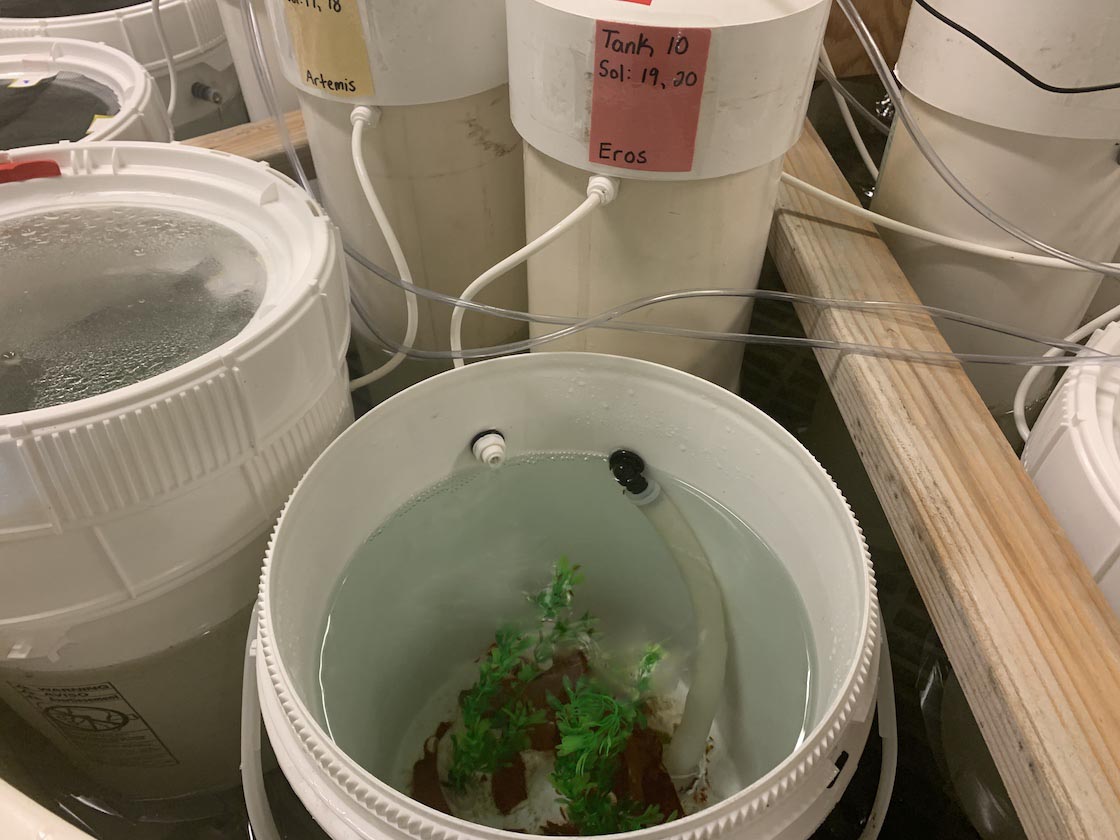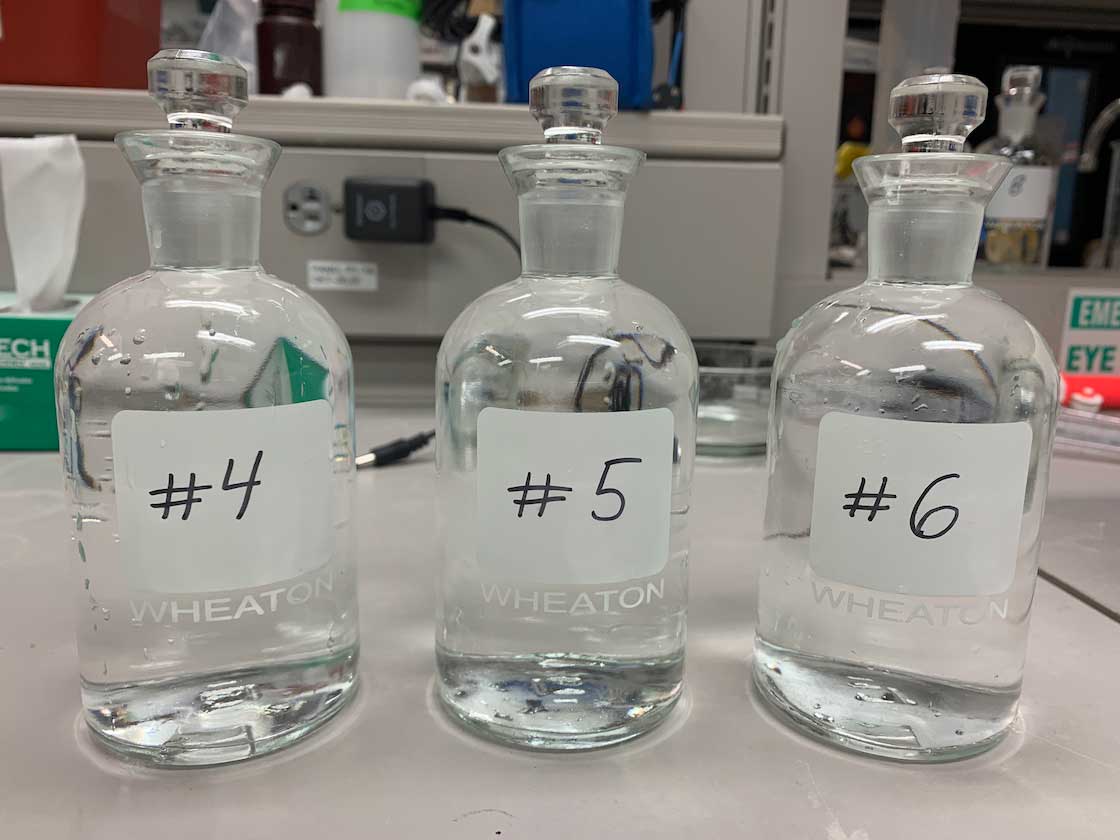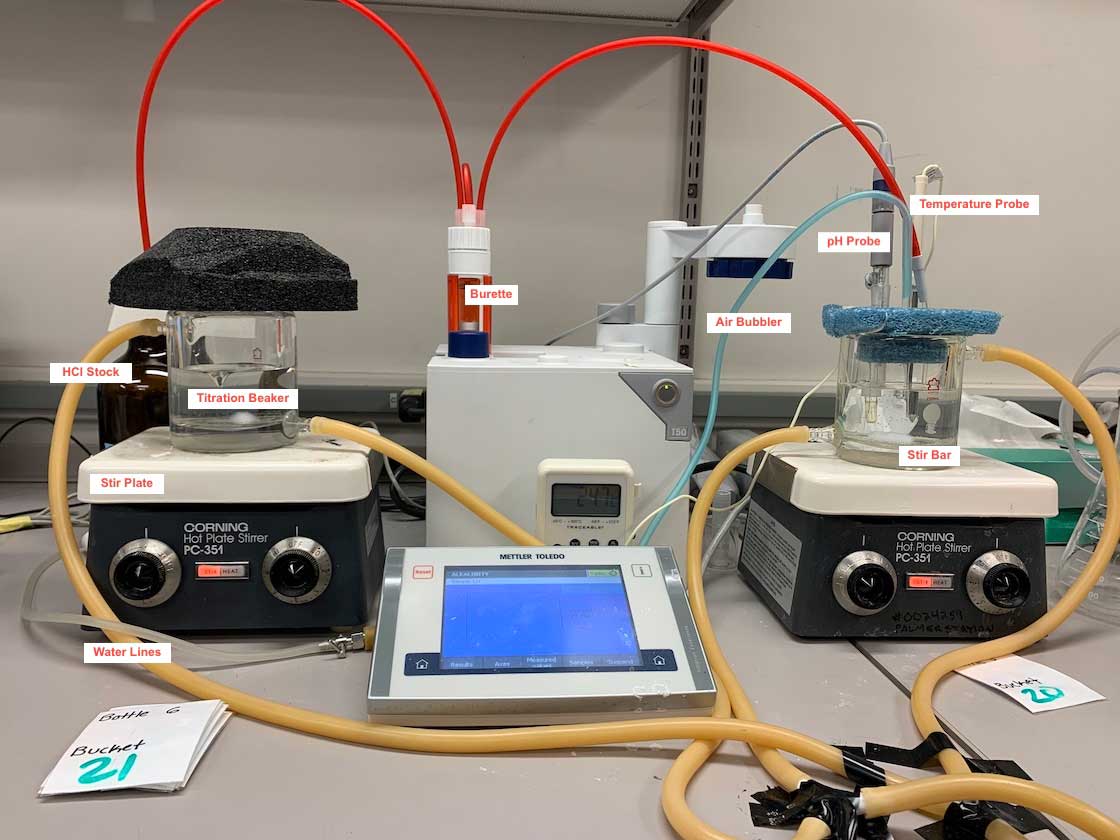 Now that we have the experiment started, as Hannah discusses in her most recent post, we’re done sorting amphipods and have moved onto doing seawater chemistry. Every morning we test six water samples from randomly selected buckets to give us more precise measures of the conditions than a pH probe by itself can provide. Each of us has our own job that we take care of, which for me is running titrations to calculate the alkalinity of the water (a measure of the sample’s ability to buffer added acids and resist changes to pH). Meanwhile, Jami is running the spectrophotometer to determine pH, and Hannah is measuring the pH of all 24 tanks with the handheld probe to make sure the ones we aren’t testing that day are still at the right level.
Now that we have the experiment started, as Hannah discusses in her most recent post, we’re done sorting amphipods and have moved onto doing seawater chemistry. Every morning we test six water samples from randomly selected buckets to give us more precise measures of the conditions than a pH probe by itself can provide. Each of us has our own job that we take care of, which for me is running titrations to calculate the alkalinity of the water (a measure of the sample’s ability to buffer added acids and resist changes to pH). Meanwhile, Jami is running the spectrophotometer to determine pH, and Hannah is measuring the pH of all 24 tanks with the handheld probe to make sure the ones we aren’t testing that day are still at the right level.
Since Jami and I use the same water samples to conduct our part of the chemistry, first Jami goes around and collects the six bottles of seawater from the tanks of the day, and I take the temperatures and pH levels using a probe for later calculations. For the spectrophotometer, it’s very important that the water not be exposed to air beforehand, so Jami gets her water samples loaded into the machine first and then passes the bottles off to me to do the titrations. Although, for the purpose of the titrations, the samples are less sensitive, we still have to be careful to avoid aerating them since it could cause the sample to release dissolved CO2 gas and increase the pH.

The first thing I do is rinse the burette, a device which we use to add a controlled amount of acid. Rinsing ensures no air bubbles are present somewhere up the line and we will be able to accurately measure the amount of acid added. Next, I use a siphon to transport the water from the collection bottles to a beaker and measure out 130 mL. The beaker is placed on a scale and the scale is tared before the water is poured into the beakers we do the titrations in. The titration beakers are double walled and have 25 ºC water running through them, which helps bring the cold water from the aquarium up to the right temperature. The beaker is then placed back on the scale and the difference in weight is recorded. The stirring in the titration beakers is turned on and the temperature is monitored with a probe. The pH probe and the burette are also added to the beaker, and once the sample reaches almost 25 ºC, I add the air bubbler and start the titration. Small amounts of 0.1 N hydrochloric acid are slowly added to the sample via the burette, and the pH probe measures the changes in the pH of the sample over time.

The titration takes about 10 minutes to run, and once it finishes it gives us a big chart with all of the information the probe collected. We plug the data into an Excel sheet with the appropriate equations to compare the amount of acid added to the changes in pH over the course of the titration and get out the alkalinity. With the alkalinity from the titrator and the pHs from Jami’s work with the spec, we now have a much more detailed picture of the state of the seawater in each of our tanks than we would only with the pH and temperature probes. Check back soon for Jami’s in-depth explanation of what we do with the spectrophotometer!
Need further details on how or why we measure alkalinity let me know at